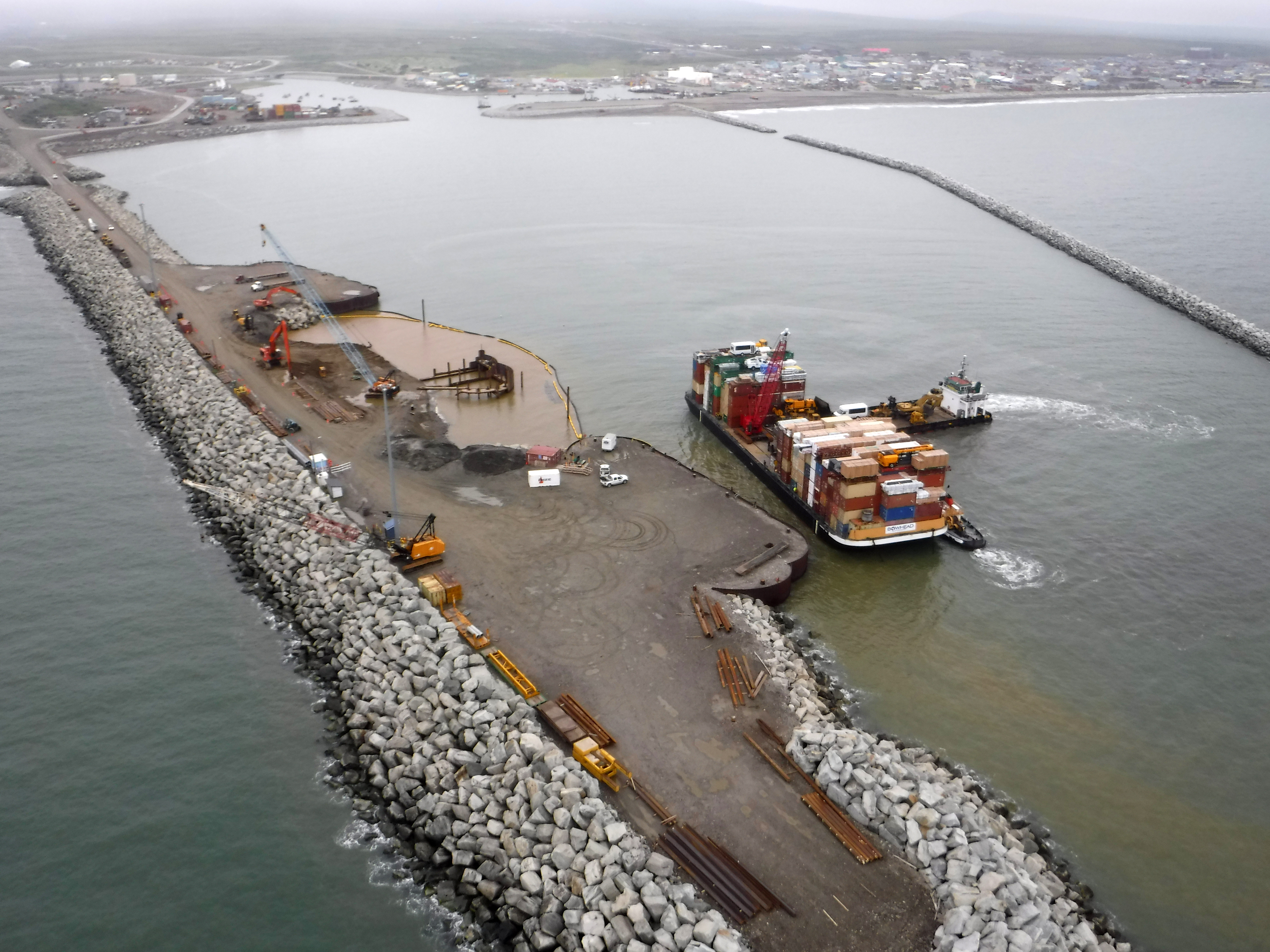Nome eyes a significant port expansion — but critics wonder if it will be enough
A new feasibility study proposes expanding the port to a depth of 40 feet — which still might not accommodate larger national security vessels.

The city of Nome, located on Alaska’s Seward Peninsula not far from the Bering Strait, has long been seen as a leading contender for the site of the first U.S. deepwater port in the Arctic.
And a draft report on potential port expansion there, released last month by the U.S. Army Corps of Engineers, brings that vision a step closer to reality
But some critics wonder if the plan goes far enough.
Currently, the port can’t accommodate ships with drafts of more than 22 feet. These restrictions make shipping less efficient and less safe, the report said, and result in higher prices for goods and services in the region, which threatens “the long-term viability of surrounding communities.”
The Corps of Engineers report recommends expanding the existing port’s west causeway by more than 3,000 feet in order to create a 40-foot-deep basin. It also recommended constructing a new east causeway with five new docks.
The same day the report was released for public comment, Col. Phillip Borders, commander of the Corps’ Alaska District, testified in a House hearing on Arctic infrastructure, including the Nome port expansion.
Rep. Sean Maloney, a Democrat from New York, questioned whether even the expanded the port would be deep enough for future needs. Maloney said the port needed to be at least 45 feet deep in order to accommodate larger ships from the Coast Guard and Navy. (The Nome feasibility study was funded by a civil works act, WRDA, and so it looked at vessels currently using the port, as well as Coast Guard ships.)
“It’s not going to be enough to just service the vessels who are using it now. Is that fair to say?” Maloney asked Borders.
But Borders responded that military construction of a deeper port more suitable for national defense vessels would fall under a different budget.
The feasibility study itself said only that the proposed expansion is intended to provide “safe, reliable, and efficient navigation and mooring” of vessels in Nome — without making civilian or military distinctions.
Joy Baker, Nome’s port director, said she has been told a 40-foot depth will be “sufficient” for icebreakers and other national security vessels.
“But we’re still in the feasibility phase,” she pointed out. The purpose of releasing the study for public comment is to receive feedback like this, she said; if the port needs to be one or two feet deeper, “that’ll be sorted out.”
Baker said they are planning to release the final report late this year or early next year. “So there’s plenty of time to weed out the specifics,” she told ArcticToday.
One alternative in the report includes a 30-foot depth, but the preferred choice for both the Corps of Engineers and the city of Nome, which undertook the assessment jointly, is the 40-foot option.
“We don’t expect the 30-foot basin to survive the final cut,” Baker said.
The report also assessed potential environmental effects, finding no significant impact and recommending no requirement for an environmental impact statement. The reasoning is that the port would expand within an “existing footprint,” Baker said, where previous environmental assessments on dredging and construction have already been conducted. But again, this recommendation is open for public feedback, she said.
The Kawerak Marine Program urged the public to comment in particular on discharge in ancestral waters, the potential for an oil spill, and effects of shipping upon marine life.
Baker said an expanded port in Nome isn’t just good for the city or the region. “It’s important for the nation” and even the world, she said, by opening up more national and international shipping opportunities such as resource development, tourism, research, and, eventually, cargo shipping.
“There’s nowhere for these vessels to go in western and Arctic Alaska,” she said. “The United States doesn’t have a deepwater port in Arctic, period. Contrary to our friends across the world, across the water.”
This year, Nome is also expecting its busiest cruise ship season ever, with seven ships booked. Currently, smaller ships dock in the port and others anchor nearby. Larger vessels in the Arctic must go to Dutch Harbor, some 1,000 miles south of the Arctic Circle, for refueling and resupply.
“There is an increasing level of urgency and importance for the project to be constructed, based on the receding ice, increased traffic and a rising need to ensure that there’s a deep-draft port in the Arctic,” Baker said.
“And in addition to supporting the larger national needs for resource development, tourism, research, national defense — the proposed expansion also stimulates additional economic activity in the region,” she said.
The draft report is open for public comments until June 6.